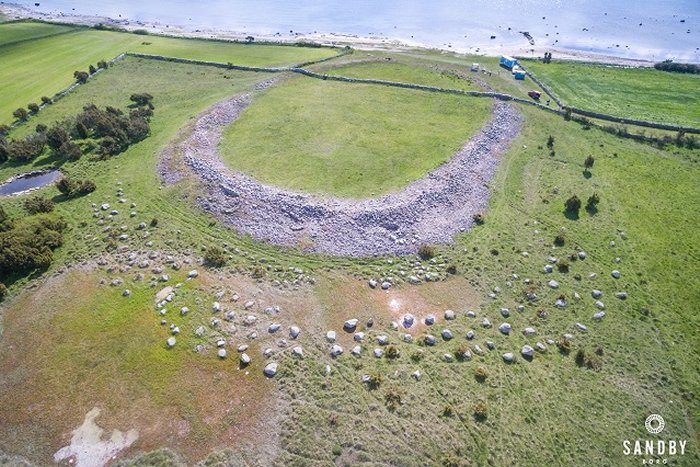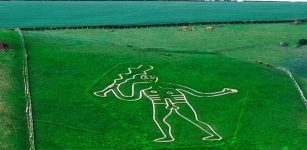Gold Coins Shed Light On The Mystery Of Sandby Borg And Massacre On The Swedish Island
AncientPages.com - In ancient times, something horrible took place near Sandby borg ringfort on the island of Öland, Sweden. During excavations archaeologists unearthed many skeletons that revealed a massacre happened, but who was behind the brutal killings?
The coin and gold rings. Photo: Daniel Lindskog
Archaeologists Clara Alfsdotter and Sophie Vallulv now report they have discovered gold rings and coins that sheds new light on the history of the area, and could give insight into the motives for a massacre which took place in the fifth century.
The two rings and one coin confirm a theory that the island was in close contact with the Roman Empire. Close by, the team found pieces of Roman glass in an area which was once an important house.
The coin was made in honor of Western Roman Emperor Valentinian III, who ruled between 425 and 455. The emperor is depicted on one side of the coin, with his foot resting on the head of a barbarian – a common motif in coinage from the period. A similar coin commemorating Valentinian III was found three years ago.
Photo: Daniel Lindskog
The size of the rings suggests they belonged to a woman, despite the fact none of the many skeletons found in the area have yet been identified as female.
"We haven't found treasure like this before, though we have found jewellery deposits," Helena Victor, the project leader, told The Local.
See also:
1500-Year-Old Mystery Of The Sandby Borg – Excavation Of Ringfort On Öland, Sweden
Enigmatic Ale’s Stones – Sweden’s Megalithic Ship-Like Formation
"It's always exciting to find gold – the team will always remember this day. It's also important because we now know a lot more about the house where they were found. It seems to have had a special purpose, and it may have been the house of a chieftain or a minor king."
Victor said Sandby Borg is of great interest to archaeologists because they want to unravel the cause of the massacre. Despite the fact that less than 3% of the ringfort have been excavated, the remains of over ten individuals have been uncovered and all of them show indications to having died in a violent massacre that took place around 1500 years ago.
The ringfort. Photo: Sebastian Jakobsson
"The bodies are lying as they were left, so there were no burials and it's a moment frozen in time," Victor explained.
"This discovery could help explain why the massacre took place – maybe these people had too much gold and jewellery. Archaeology is all about finding out about people, with a very long-term perspective, so we can also compare these finds to violence we see nowadays, and use them to discuss for example why humans are so brutal and hateful," she added.
Now, the rings and coin will be cleaned up by specialists and compared to those found in past digs on Öland, before being put on display in the museum's exhibition.
AncientPages.com
Expand for references






















